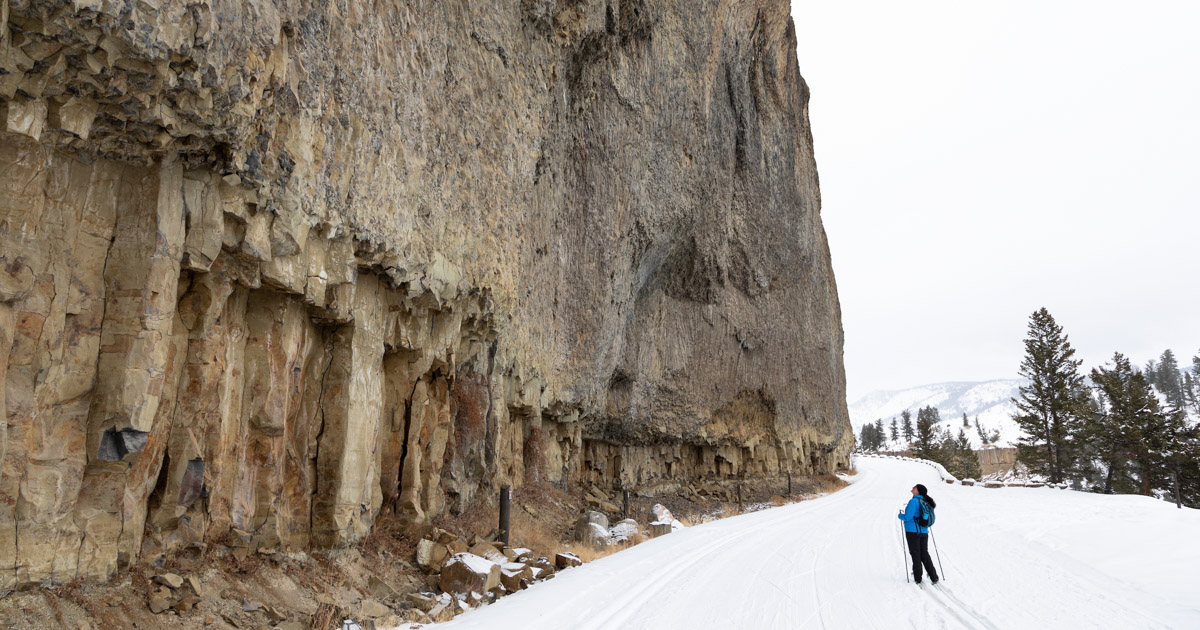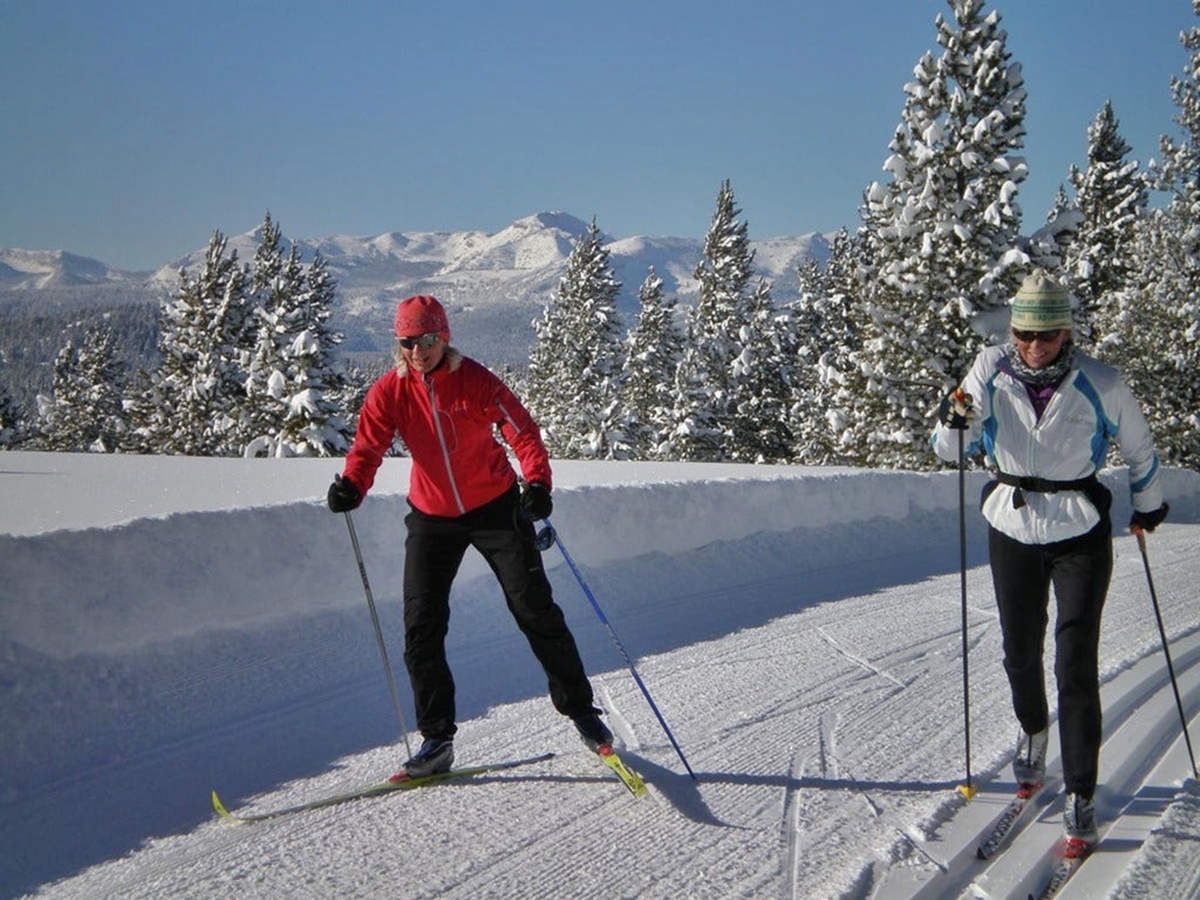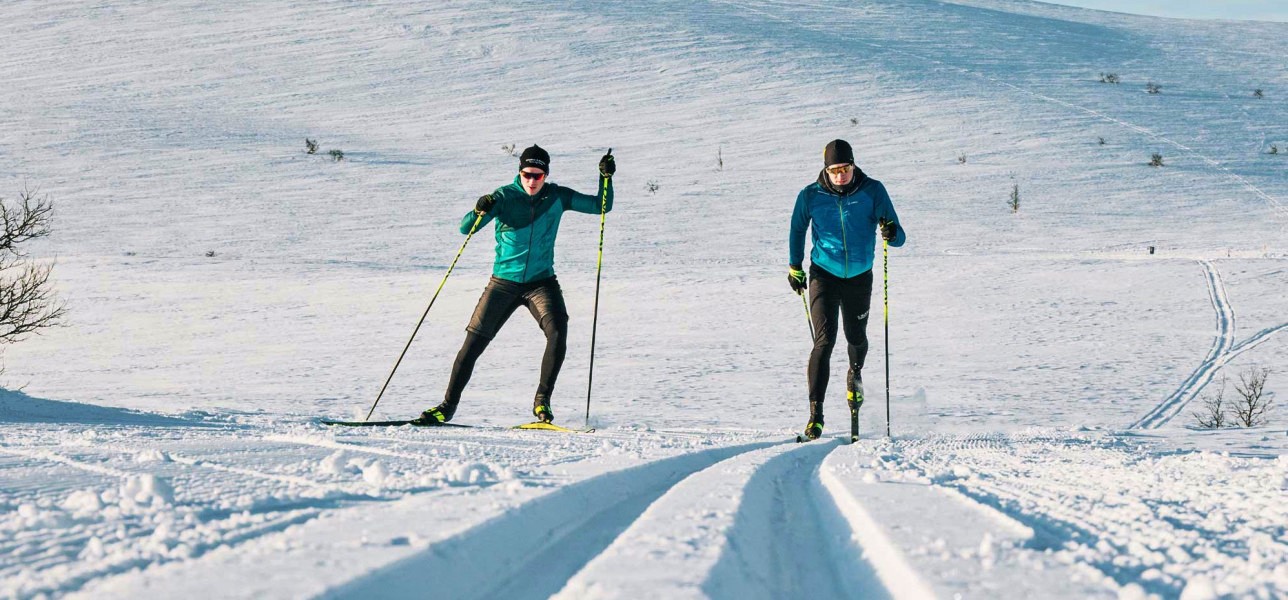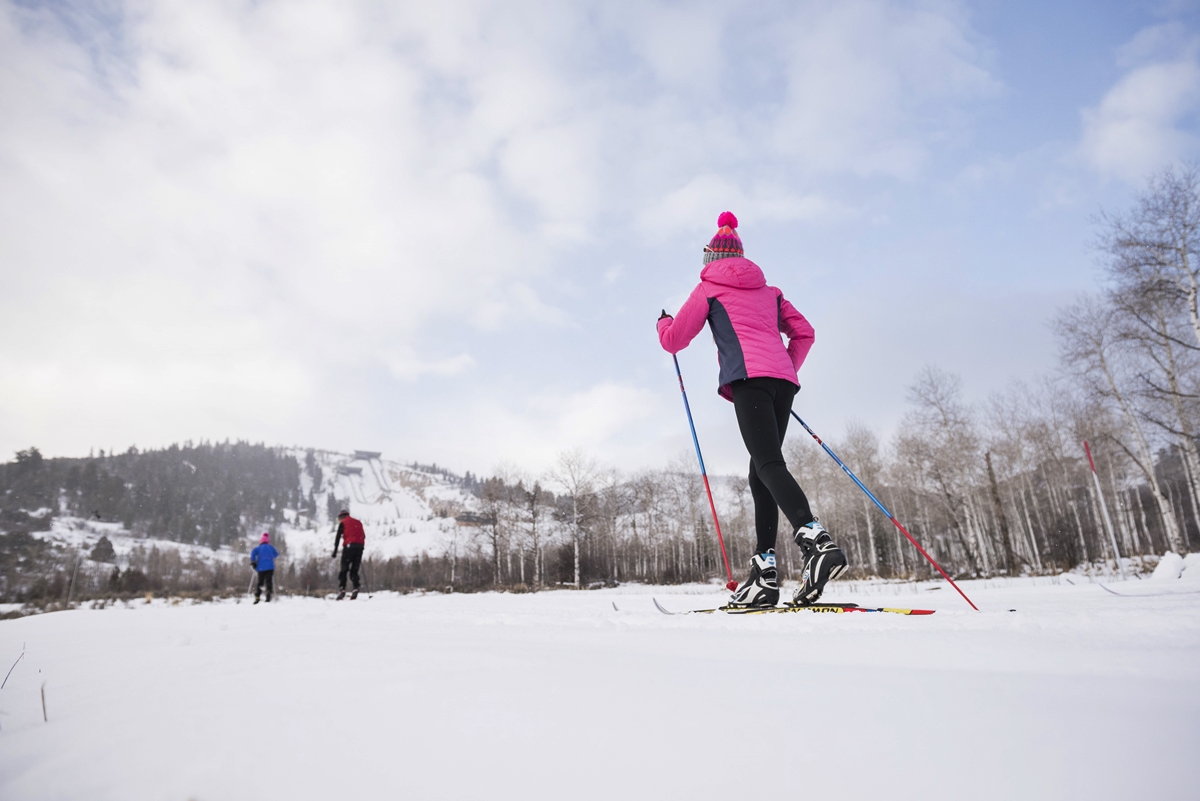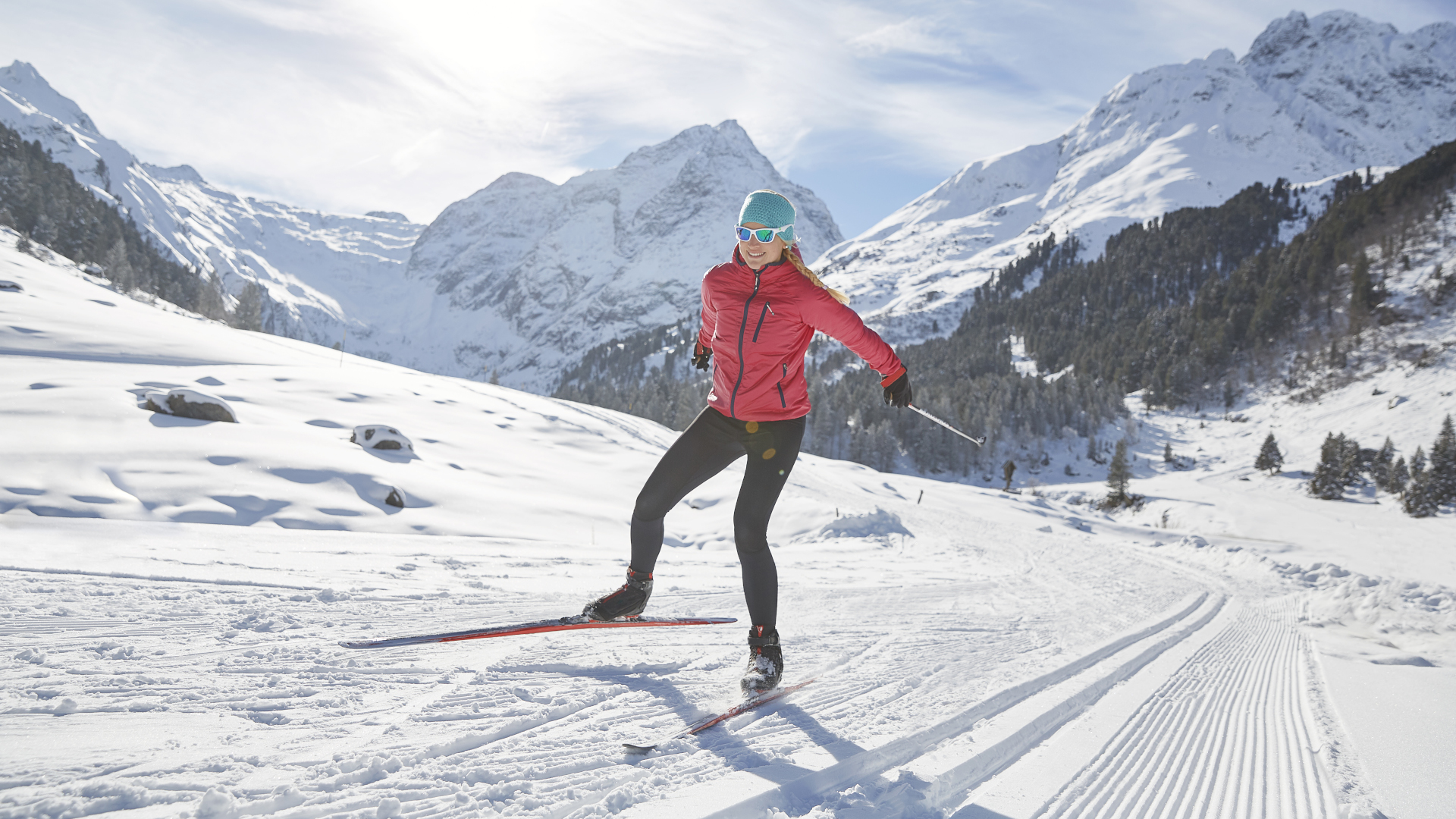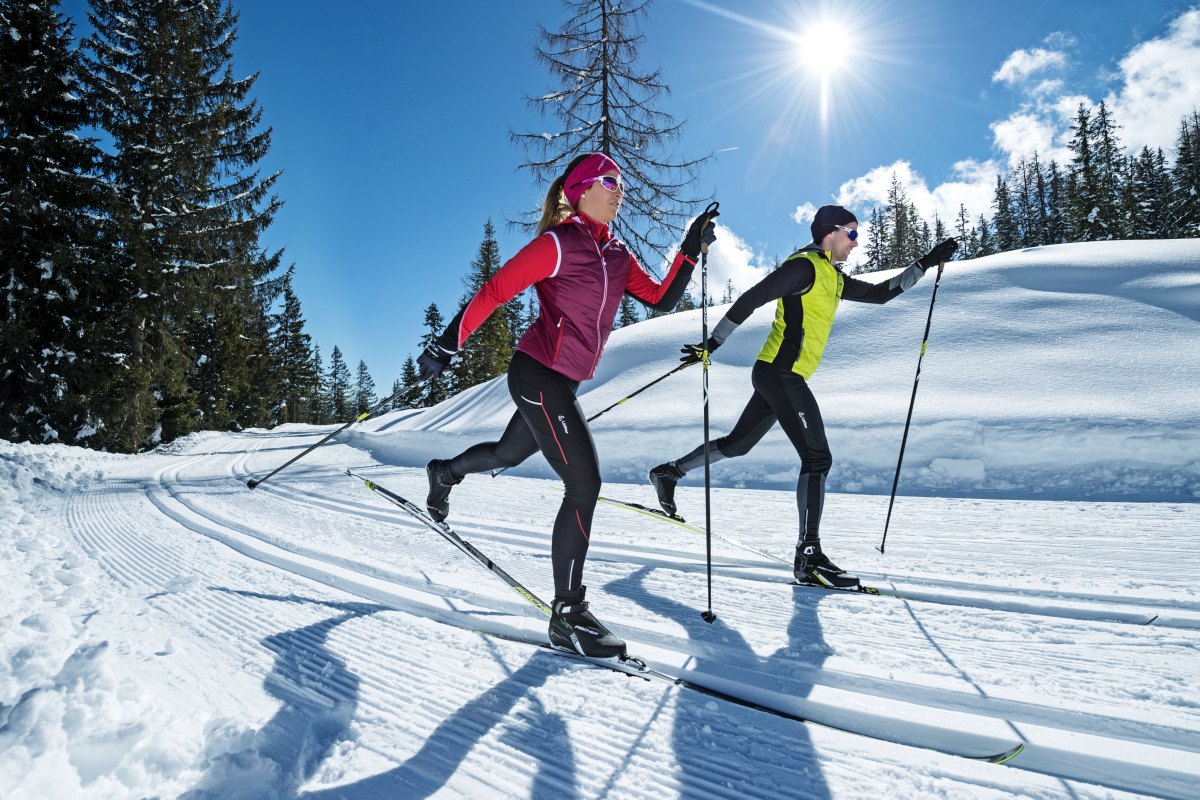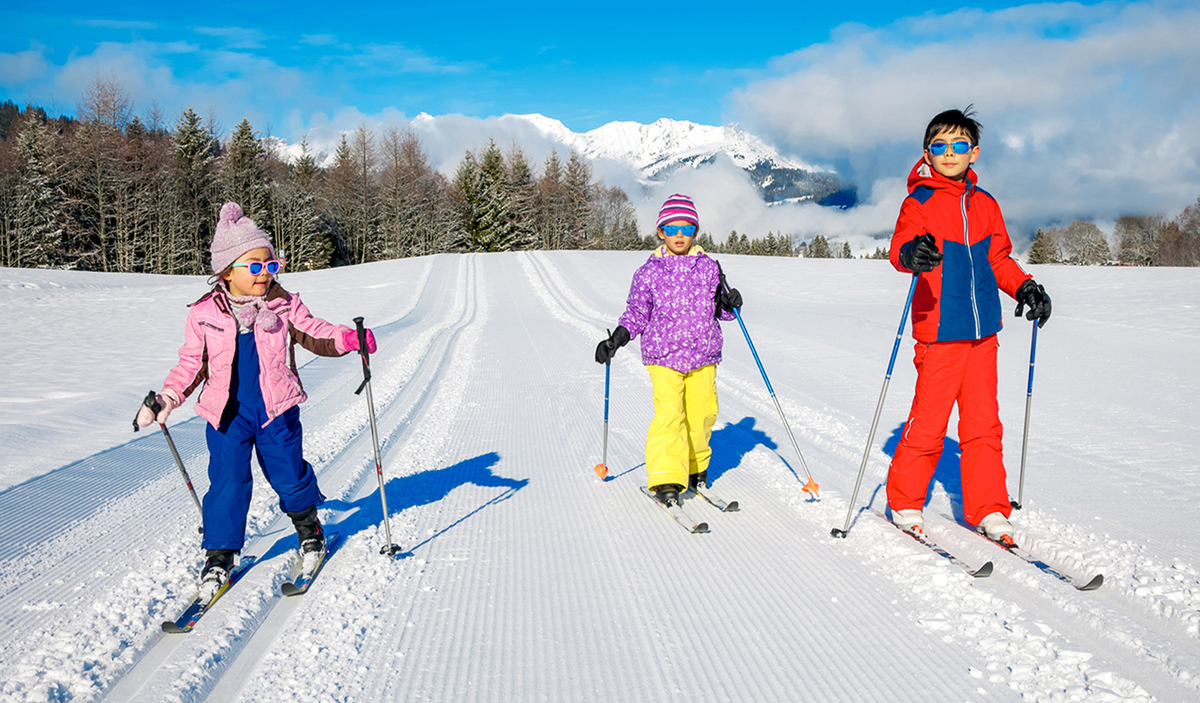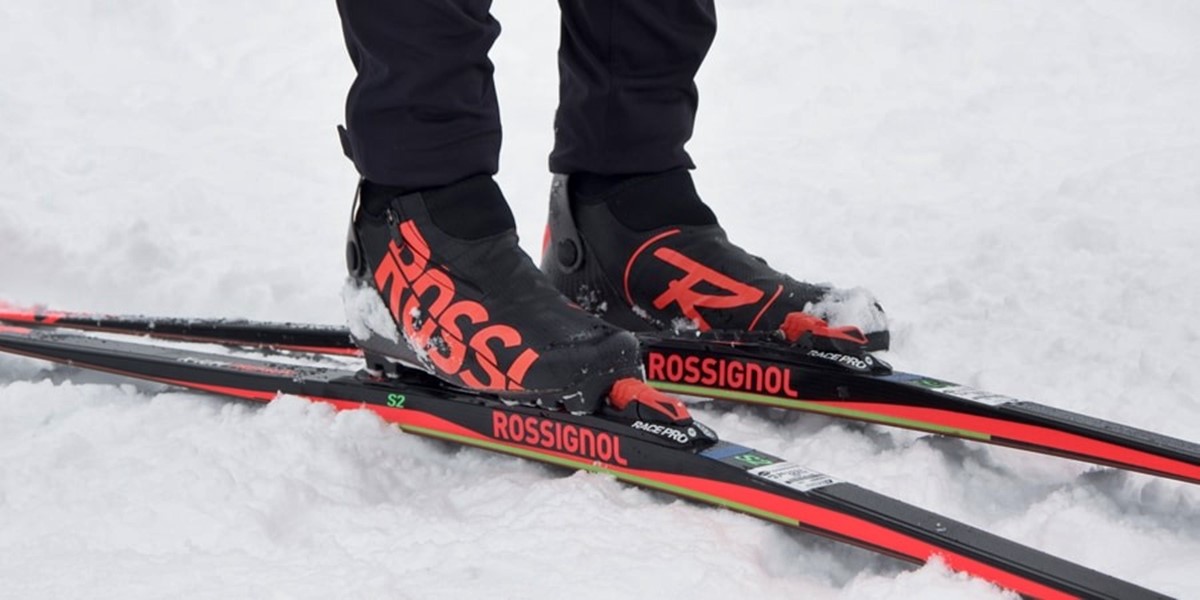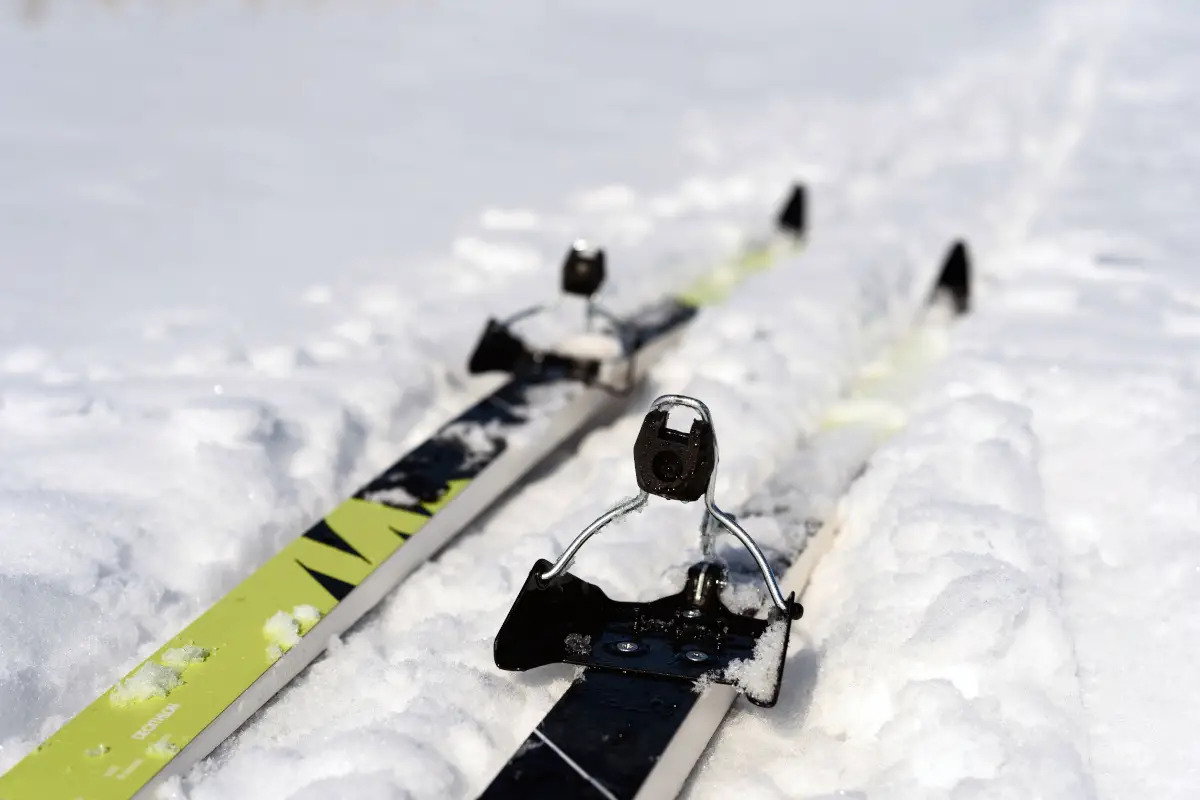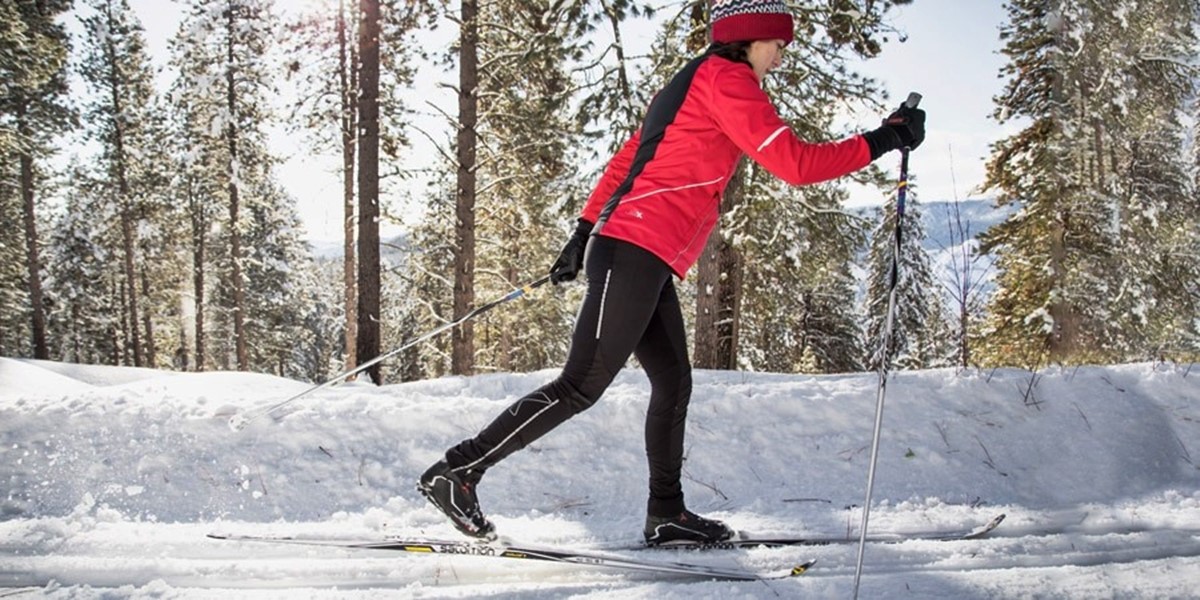

Featured
What To Wear To Cross Country Ski
Modified: January 2, 2024
Discover the best cross country skiing attire with our featured collection. Stay warm and stylish on the trails with these essential winter clothing options.
Introduction
Cross country skiing is a popular and exhilarating winter sport that offers a great way to enjoy the outdoors and stay active during the colder months. Whether you’re a beginner or an experienced skier, having the right gear is essential to ensure comfort and performance on the trails. One key aspect of your cross country skiing gear is your clothing.
Choosing the appropriate clothing for cross country skiing is crucial to staying warm, dry, and comfortable throughout your adventure. The right clothing will provide insulation and protection from the elements, while also allowing for freedom of movement and breathability. With the right outfit, you can fully immerse yourself in the beauty of the winter landscape while maintaining optimal comfort.
In this article, we will guide you through the process of selecting the suitable clothing for cross country skiing. We’ll cover everything from base layers to outerwear, bottoms, socks, gloves or mittens, headwear, footwear, and even accessories. Whether you’re a beginner looking to invest in your first set of cross country skiing gear or an experienced skier wanting to upgrade your wardrobe, we have you covered.
Keep in mind that the specific clothing you’ll need can vary depending on factors such as temperature, snow conditions, and personal preference. However, by understanding the purpose and function of each clothing layer, you’ll have the knowledge to make informed decisions and build a versatile wardrobe that can adapt to changing conditions.
Now, let’s dive into the world of cross country skiing attire and discover the key pieces that will help you stay warm, comfortable, and stylish on the trails.
Choosing the Right Base Layers
When it comes to cross country skiing, the base layer is the foundation of your clothing system. It plays a crucial role in regulating your body temperature and wicking away moisture to keep you dry and comfortable throughout your ski. The key to choosing the right base layer lies in selecting fabrics that are moisture-wicking, breathable, and insulating.
For the base layer, opt for materials like merino wool or synthetic fabrics such as polyester or nylon. These materials are known for their excellent moisture-wicking properties and ability to regulate body temperature. They also dry quickly, which is essential for preventing heat loss and maintaining comfort. Avoid cotton, as it tends to retain moisture and can leave you feeling cold and wet.
When selecting a base layer top, consider the weather conditions you’ll be skiing in. For colder temperatures, a long-sleeved base layer with a mock neck or crew neck is ideal to provide extra warmth and coverage. On milder days, a short-sleeved or sleeveless base layer may be more comfortable. Look for base layers with a snug fit that doesn’t restrict your movement, as this will allow for better insulation and moisture-wicking capabilities.
For the base layer bottoms, opt for thermal leggings or tights that provide both insulation and flexibility. Look for options with a brushed or fleece lining for added warmth. The leggings should fit snugly against your skin without being too restrictive. Some base layer bottoms also come with a drawstring or an elastic waistband for a secure fit. Make sure the leggings are long enough to reach your ankles to prevent any gaps between the base layer and your socks.
It’s important to note that layering is key in cross country skiing, so consider adding an additional lightweight base layer when temperatures are extremely cold. This extra layer will provide additional insulation and keep you warm without adding bulk.
In summary, when choosing the right base layers for cross country skiing, prioritize moisture-wicking, breathable, and insulating materials like merino wool or synthetic fabrics. Opt for long-sleeved tops for colder temperatures and thermal leggings or tights for the bottoms. Remember to layer up when necessary and ensure a snug fit without restricting movement. With the right base layers, you’ll be able to start your cross country skiing adventure with comfort and confidence.
Selecting the Perfect Mid Layers
In addition to a base layer, mid layers are an essential part of your cross country skiing attire. Mid layers provide insulation and help trap heat close to your body, ensuring warmth and comfort in colder temperatures. When selecting the perfect mid layers, it’s important to consider both the insulation level and the breathability of the materials.
One popular mid layer option is a fleece or synthetic jacket. These jackets are lightweight, breathable, and provide excellent insulation. Fleece jackets are known for their ability to retain warmth even when wet, making them ideal for snowy or damp conditions. Look for jackets with a full zip or half zip design, as this allows for easy temperature regulation during your ski.
Another mid layer option is a lightweight down jacket or vest. Down insulation offers exceptional warmth-to-weight ratio, meaning it provides excellent insulation without adding bulk. Down jackets are highly compressible and can be easily packed into your backpack when not in use. However, keep in mind that down insulation may not be as effective in wet conditions, so be sure to check the weather forecast before choosing this option.
Alternatively, you can opt for synthetic insulated jackets or vests. These jackets mimic the insulating properties of down but can still provide warmth when wet. Synthetic insulation is also a more affordable option compared to down. Look for jackets with a high fill power to ensure maximum warmth and consider features such as a hood or adjustable cuffs for added protection against the elements.
In addition to jackets, you can also consider wearing a lightweight fleece or thermal top as a mid layer. These tops provide extra warmth and can be easily combined with a base layer and outer layer for optimal insulation. Look for tops with a quarter zip or full zip for easy ventilation during your ski.
Remember to consider the weather conditions and your personal preference when choosing your mid layers. In colder temperatures, a combination of two mid layers, such as a fleece jacket and a down vest, can provide extra insulation. On milder days, a single mid layer may suffice.
Overall, when selecting the perfect mid layers for cross country skiing, prioritize insulation and breathability. Look for fleece jackets, lightweight down jackets or vests, synthetic insulated jackets, or thermal tops. Consider layering options to adjust to varying temperatures, and always choose materials that provide warmth without compromising breathability. With the right mid layers, you’ll be well-equipped to stay cozy and comfortable on the trails.
Picking the Ideal Outer Layers
Outer layers are designed to protect you from the elements, such as wind, snow, and rain, during your cross country skiing adventure. These layers should be both waterproof and breathable to keep you dry and comfortable throughout your ski. When picking the ideal outer layers, it’s important to consider factors such as weather conditions, insulation needs, and the level of activity you’ll be engaging in.
One essential outer layer is a waterproof and windproof jacket. Look for jackets made with materials such as Gore-Tex or similar waterproof-breathable fabrics. These jackets provide excellent protection against the elements while allowing moisture to escape, keeping you dry from both external and internal sources. Consider jackets with adjustable hoods, cuffs, and hemlines to seal out the cold and ensure a snug fit that doesn’t restrict movement.
For additional protection, you may want to invest in a pair of waterproof and windproof pants or bibs. These pants should have a good fit and adjustable waistbands or suspenders to ensure they stay in place during your ski. Look for pants with reinforced knees and seat for durability, and consider options with full-length zippers or side vents for easy ventilation during intense activity.
While a waterproof jacket and pants are essential, layering is still key in cross country skiing. Underneath your outer layers, you may want to wear an insulated vest or lightweight jacket for added warmth. Look for options that provide insulation without adding bulk, such as synthetic down or PrimaLoft insulation.
In addition to a jacket and pants, don’t forget to protect your hands with waterproof and insulated gloves or mittens. Look for gloves that provide a good balance of dexterity and warmth. Insulated options with waterproof materials are ideal, as they will keep your hands dry and comfortable even in wet conditions. Consider gloves with adjustable wrist straps to keep out snow and cold air.
Lastly, choose headwear that covers your head, ears, and neck to prevent heat loss. A beanie or a balaclava made from moisture-wicking and insulating materials can help retain body heat while managing sweat. Look for options with a snug fit that can be easily worn underneath a helmet if necessary.
In summary, picking the ideal outer layers for cross country skiing involves choosing waterproof and windproof jackets and pants, as well as insulated gloves or mittens. Layering with an additional mid layer is a good idea for added warmth. Look for materials that are both waterproof and breathable to ensure comfort and protection from the elements. With the right outer layers, you’ll be well-prepared to tackle any weather conditions and focus on enjoying your cross country skiing experience.
Deciding on the Right Bottoms
When it comes to choosing the right bottoms for cross country skiing, comfort, flexibility, and protection are key considerations. The right bottoms should provide freedom of movement, insulation, and protection against the elements. Whether you prefer pants or tights, it’s important to find a pair that meets your needs and preferences.
Cross country ski pants are typically designed to be lightweight, breathable, and provide insulation without restricting movement. Look for pants made from water-resistant or waterproof materials to protect you from snow and moisture. Consider options with reinforced knees and seat for added durability, as well as articulated knees to enhance freedom of movement. Look for pants with adjustable waistbands or integrated belts to achieve a secure and comfortable fit.
For those who prefer a more streamlined fit, cross country ski tights offer a great option. Tights are typically made from stretchy and moisture-wicking materials that provide a close fit and excellent flexibility. Look for tights with a brushed or fleece lining for added warmth. Some tights may also come with additional windproof panels on the front to protect against chilly winds. Consider options with a wide waistband or a drawstring for a secure and comfortable fit.
Regardless of whether you choose pants or tights, it’s important to consider the length. Ideally, the bottoms should reach the top of your ski boots or slightly overlap to prevent any gaps for snow or cold air to enter. The length should also allow for freedom of movement without excessive fabric bunching up or dragging on the ground.
In terms of layering, it’s common to wear a base layer underneath your bottoms for added insulation, especially in colder temperatures. Opt for thermal leggings or tights that provide both warmth and flexibility. These base layer bottoms should fit snugly against your skin without being too restrictive.
Additionally, consider the possibility of varying weather conditions during your ski. If you anticipate wet or snowy conditions, it may be wise to invest in waterproof or water-resistant bottoms to keep you dry and comfortable. You can also consider wearing a pair of gaiters to protect your lower legs and prevent any snow from entering your boots.
In summary, deciding on the right bottoms for cross country skiing involves choosing between pants and tights based on your preferences and needs. Look for lightweight, breathable, and flexible materials that provide insulation without restricting movement. Consider options with adjustable waistbands or integrated belts for a secure fit. Additionally, consider layering with a base layer for added warmth and opt for waterproof or water-resistant bottoms if necessary. With the right bottoms, you’ll be able to enjoy your cross country skiing adventure with comfort and confidence.
Selecting the Right Socks
Choosing the right socks for cross country skiing is crucial for maintaining warmth, comfort, and moisture management. The right pair of socks can provide insulation, prevent blisters, and keep your feet dry throughout your ski. When selecting socks for cross country skiing, there are a few important factors to consider.
First and foremost, prioritize moisture-wicking materials that will help keep your feet dry. Look for socks made from merino wool or synthetic fibers like polyester or nylon. These materials have excellent moisture-wicking properties and can help prevent the buildup of sweat inside your ski boots. Avoid cotton socks, as they tend to retain moisture and can leave your feet feeling damp and cold.
Consider the cushioning and thickness of the socks. Cross country skiing requires a snug fit between your feet and the ski boots, so it’s important to choose socks that are not too thick or bulky. Look for socks with minimal cushioning in key areas like the heel and ball of the foot to prevent blisters and improve the overall fit of your ski boots.
Pay attention to the length of the socks as well. Most cross country skiers prefer socks that reach at least up to the calf or just below the knee. This length helps provide additional insulation and prevents any gaps between the socks and your base layer bottoms or outerwear. Make sure the socks are long enough to cover your lower legs but not too tight that they restrict circulation.
It’s also a good idea to consider the thickness and level of insulation needed based on the temperature and conditions you’ll be skiing in. Thicker socks with more insulation are suitable for colder temperatures, while thinner socks are better for milder conditions. Keep in mind that the fit of your ski boots will also impact the choice of socks, so try on your boots with the socks you plan to wear to ensure a proper fit.
Lastly, consider investing in socks with additional features like reinforced heels and toes for durability, seamless construction to minimize friction and reduce the risk of blisters, and arch support for added comfort and stability. These features can greatly enhance your skiing experience and keep your feet in top condition.
In summary, when selecting socks for cross country skiing, look for moisture-wicking materials such as merino wool or synthetic fibers. Choose socks with minimal cushioning and a suitable length that provides insulation without being too bulky. Consider the temperature and conditions you’ll be skiing in and choose the appropriate thickness. Look for socks with additional features like reinforced heels and toes, seamless construction, and arch support for added durability, comfort, and stability. With the right socks, you’ll be able to keep your feet dry, warm, and blister-free as you glide through the winter wonderland.
Finding the Perfect Gloves or Mittens
When it comes to cross country skiing, finding the perfect gloves or mittens is essential to keep your hands warm, protected, and comfortable throughout your ski. Your hands are particularly susceptible to cold temperatures, so it’s important to choose gloves or mittens that provide insulation, dexterity, and weather resistance. Here are some factors to consider when selecting the perfect handwear for cross country skiing.
Insulation is a crucial aspect of cross country ski gloves or mittens. Look for options with synthetic or down insulation, as they offer excellent warmth-to-weight ratios. Consider the level of insulation needed based on the temperature and conditions you’ll be skiing in. Thicker insulation is preferable for colder temperatures, while lighter insulation is suitable for milder conditions.
Weather resistance is another important factor. Cross country ski gloves or mittens should be waterproof or water-resistant to protect your hands from snow, moisture, and wind. Look for gloves with a durable outer shell made from materials like nylon or Gore-Tex, which offer excellent waterproofing capabilities without sacrificing breathability.
Dexterity is crucial for cross country skiing, as you need to have a secure grip on your ski poles and be able to manipulate equipment and adjust clothing layers. Look for gloves or mittens with a pre-curved fit and articulated fingers for improved dexterity. Consider options that have silicone or rubber grips on the palm and fingers to enhance grip and control.
Consider the length of the gloves or mittens as well. Longer cuffs that extend up the wrist or forearm provide better protection against the elements and prevent snow from entering your sleeves or jacket. Adjustable wrist straps or cinches are also beneficial to help keep the gloves or mittens securely in place and seal out cold air and snow.
It’s also important to consider personal needs and preferences. Some people prefer gloves for their individual finger dexterity, while others prefer the warmth and simplicity of mittens. If you opt for mittens, look for options with separate finger compartments inside to provide better dexterity.
Finally, it’s always a good idea to try on gloves or mittens before purchasing them. Make sure they fit comfortably and allow for a full range of motion. Consider trying them on with your ski poles to ensure a proper grip.
In summary, finding the perfect gloves or mittens for cross country skiing involves considering insulation, weather resistance, dexterity, length, and personal preferences. Look for options with insulation, waterproof or water-resistant materials, and a pre-curved fit for dexterity. Consider the length and features like adjustable wrist straps. Try them on before purchasing to ensure the right fit. With the perfect gloves or mittens, you’ll keep your hands warm and protected, allowing you to fully enjoy your cross country skiing adventure.
Choosing the Right Hat or Headwear
Choosing the right hat or headwear is crucial for keeping your head warm and protected during your cross country skiing adventure. As much of your body’s heat is lost through your head, it’s important to choose headwear that provides insulation, breathability, and coverage. Here are some factors to consider when selecting the right hat or headwear for cross country skiing.
Insulation is a key consideration when choosing a hat or headwear. Look for options made from warm and insulating materials like fleece, wool, or synthetic fibers. These materials provide excellent insulation, trapping heat and keeping your head warm even in colder temperatures. Consider the thickness of the material based on the temperature and conditions you’ll be skiing in. Thicker hats or headbands are preferable for colder temperatures, while thinner options are suitable for milder conditions.
Coverage is another important factor. A hat or headwear should fully cover your head, ears, and the back of your neck to prevent heat loss and protect against cold winds. Look for options with a snug fit and a design that provides adequate coverage. Consider hats that have extended panels or flaps to cover your ears or neck, or opt for a full balaclava-style headwear that covers your entire head, neck, and face if needed.
Breathability is key to prevent overheating and excessive sweating. Look for headwear made from moisture-wicking and breathable materials that allow for the efficient evaporation of sweat and moisture. This will help to keep your head dry and comfortable during your ski. Hats with mesh panels or vents are also beneficial to enhance airflow and regulate temperature.
Consider the level of activity and intensity of your skiing when choosing headwear. If you tend to heat up quickly and engage in more rigorous skiing, look for lightweight and breathable headwear options that provide good moisture management. On the other hand, if you are skiing in colder temperatures or are more prone to feeling the cold, consider thicker and more insulating headwear options.
Personal preference and comfort are also important considerations. Some people prefer hats with a snug fit and a close-fitting design, while others may prefer looser, more relaxed options. Consider the hat’s design, such as a beanie, a headband, or a combination of both, and choose a style that suits your taste and ensures a comfortable fit.
In summary, choosing the right hat or headwear for cross country skiing involves considering insulation, coverage, breathability, activity level, and personal preferences. Look for options made from warm and insulating materials, with a design that covers your head, ears, and neck. Prioritize moisture-wicking and breathable materials to prevent overheating and excessive sweating. Consider the level of activity and your personal comfort when choosing the thickness and style. With the right hat or headwear, you’ll stay warm, protected, and comfortable as you glide through the winter wonderland.
Selecting Appropriate Footwear
Selecting the appropriate footwear is crucial for cross country skiing, as it provides the necessary support, warmth, and comfort during your ski. The right pair of boots will allow you to maintain control, provide insulation, and keep your feet dry throughout your adventure. When choosing cross country ski boots, consider these important factors.
Fit is one of the most crucial aspects when selecting cross country ski boots. Boots should fit snugly but not be too tight, as this could restrict circulation and cause discomfort. Look for boots with a snug heel and ankle fit and enough room for your toes to wiggle. Consider trying on boots with the socks you plan to wear during your ski to ensure the right fit.
It’s important to note that cross country ski boots should be stiffer than regular winter boots or hiking shoes to provide better support and control. The stiffness ensures efficient power transfer from your legs to the skis, allowing for more precise movements and better glide. There are different levels of stiffness available, ranging from soft for beginners to stiff for more experienced skiers. Choose boots that match your skill level and skiing style.
Consider the type of cross country ski bindings your boots need to be compatible with. There are two main types: NNN (New Nordic Norm) and SNS (Salomon Nordic System). Make sure the boots match the specific bindings you have or plan to use. If you’re unsure, consult with a ski shop professional who can assist you in selecting the right type and model.
Insulation is another crucial aspect when it comes to cross country ski boots. Look for boots with adequate insulation to keep your feet warm during your ski. The level of insulation needed will depend on the temperatures you’ll be skiing in and how easily your feet tend to get cold. Consider wearing thicker socks or adding a heat pack inside your boots for extra warmth on colder days.
Finally, consider the support and protection provided by the boots. Cross country ski boots should offer good ankle support to help maintain stability and prevent injuries. Look for boots with a higher cut that provides support around the ankle. Additionally, boots should be made from waterproof or water-resistant materials to keep your feet dry while skiing through wet or snowy conditions.
In summary, selecting appropriate footwear for cross country skiing involves choosing boots that fit snugly and provide adequate support. Consider the stiffness of the boots to match your skill level, ensure compatibility with the ski bindings you’ll be using, and choose boots with sufficient insulation for the temperatures you’ll be skiing in. Look for boots with good ankle support and made from waterproof materials. With the right footwear, you’ll be able to enjoy a comfortable and enjoyable cross country skiing experience.
Adding Accessories and Extras
In addition to the essential clothing items mentioned earlier, there are several accessories and extras that can further enhance your cross country skiing experience. These accessories can provide additional warmth, protection, and convenience during your ski. Here are some accessories and extras to consider adding to your gear.
Gaiters are a valuable accessory for cross country skiing, especially in snowy or wet conditions. These protective coverings wrap around your lower legs and ankles, preventing snow, moisture, and debris from entering your ski boots. Look for gaiters made from waterproof materials and with secure closures, such as zippers or hook-and-loop fasteners.
Neck gaiters or buffs are versatile and functional accessories that can keep your neck and face warm while skiing. They can be worn as a neck warmer, pulled up over your mouth and nose for added protection, or even used as a headband or hat. Look for neck gaiters made from moisture-wicking and insulating materials for optimal comfort and warmth.
Ski-specific sunglasses or goggles are essential for protecting your eyes from the sun’s glare, wind, and snow. Look for options with UV protection and anti-fog coatings. Goggles with interchangeable lenses are handy for adjusting to changing light conditions. Make sure the goggles fit comfortably with your helmet and provide a wide field of vision.
Hand and toe warmers can be incredibly useful in extremely cold temperatures. These small heat packs provide extra warmth and can be easily slipped into your gloves or boots. Look for hand and toe warmers that provide long-lasting heat and are easily activated.
A ski bag or backpack is useful for storing and carrying your gear. Look for options with compartments or pockets to keep your items organized. Waterproof or water-resistant bags provide extra protection against the elements. Choose a bag that fits your specific needs and preferences, whether it’s a small backpack or a larger ski bag.
A ski helmet is a crucial safety accessory, especially if you’re skiing at faster speeds or in more challenging terrain. Look for helmets with adjustable vents for temperature control and a snug fit. Seek helmets that meet safety standards and have additional features like adjustable chin straps and removable ear pads for added comfort.
It’s worth mentioning that a ski pass or trail pass may be required, depending on the ski area you plan to visit. Check ahead of time to ensure you have the necessary passes or permits, and consider purchasing them online in advance to save time and hassle on the day of your ski.
In summary, adding accessories and extras to your cross country skiing gear can enhance your comfort, protection, and overall experience. Consider gaiters, neck gaiters or buffs, sunglasses or goggles, hand and toe warmers, a ski bag or backpack, a ski helmet, and any necessary passes or permits. These items can provide additional warmth, protect against the elements, and keep you organized while enjoying your cross country skiing adventure.
Conclusion
Cross country skiing is a thrilling winter sport that allows you to explore the beauty of nature while staying active. Choosing the right clothing and gear is essential to ensure your comfort, warmth, and overall performance on the trails. By selecting appropriate base layers, mid layers, outer layers, bottoms, socks, gloves or mittens, headwear, and footwear, you can optimize your cross country skiing experience.
When selecting your clothing layers, prioritize moisture-wicking and insulating materials like merino wool or synthetic fabrics. Layering is key to adapting to changing weather conditions, so consider adding or removing layers as needed. Look for outer layers that provide protection against wind, snow, and rain, while still allowing moisture to escape. Choose bottoms that allow for freedom of movement and provide adequate insulation. Select socks that are moisture-wicking and consider adding an extra layer in colder temperatures.
Find gloves or mittens that are both warm and dexterous, allowing for a secure grip on your ski poles. Choose headwear that covers your head, ears, and neck to prevent heat loss, and select footwear that fits properly, provides support, and keeps your feet warm and dry. Don’t forget to add accessories like gaiters, neck gaiters or buffs, sunglasses or goggles, hand and toe warmers, and a ski bag or backpack to enhance your comfort, protection, and convenience.
Remember that everyone’s preferences and needs may vary, so it’s important to find the gear that works best for you and your specific skiing style. Take the time to try on different options, consider the weather conditions you’ll be skiing in, and invest in high-quality gear that will last and perform well.
With the right clothing and gear, you’ll be well-prepared to embark on your cross country skiing adventure, staying warm, comfortable, and enjoying every moment on the pristine trails. So, gear up, embrace the winter landscape, and experience the joy and exhilaration of cross country skiing.
